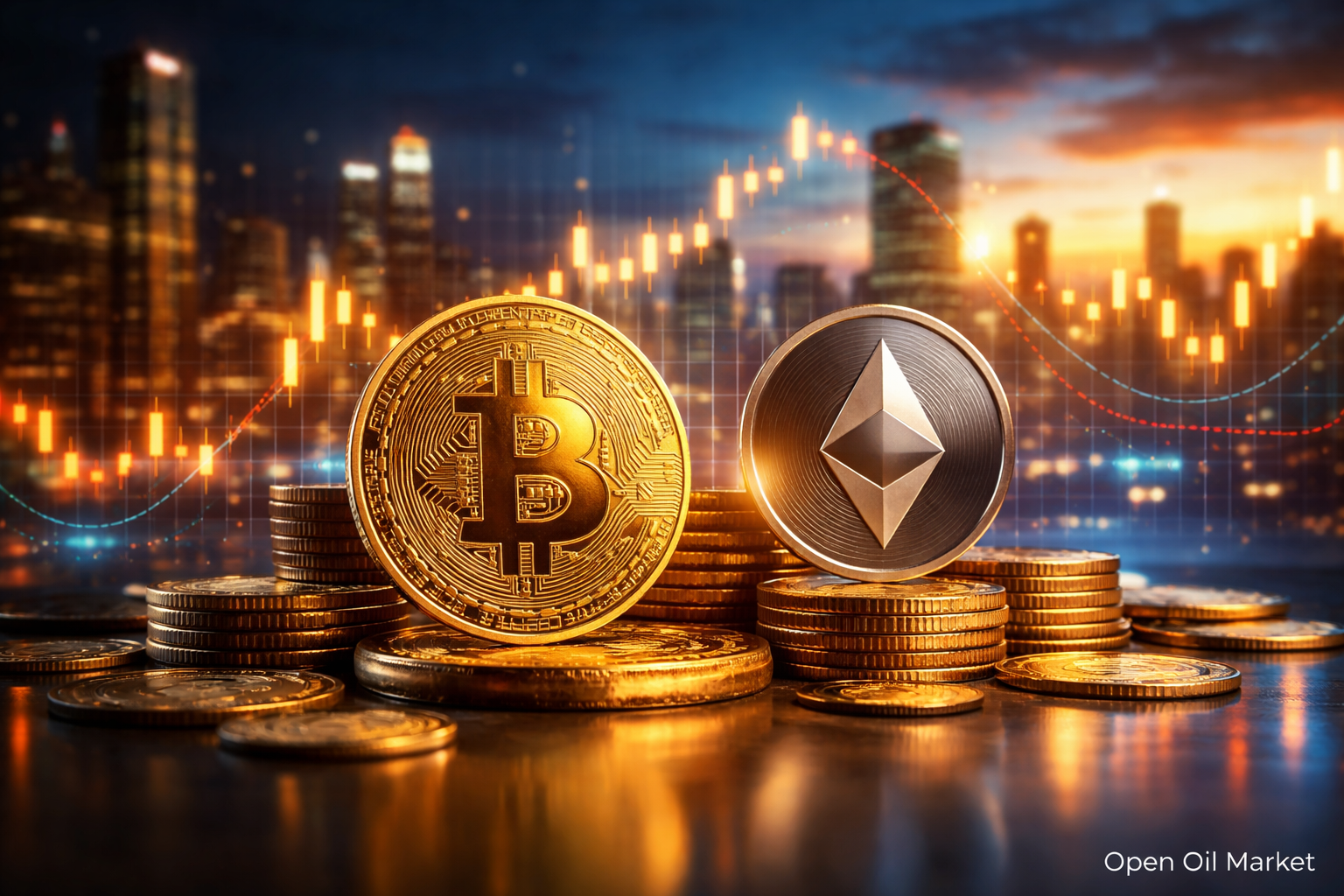
Key News in the Venture Market as of October 21, 2025: The Return of Mega Funds, Record Rounds in AI, a Boom in Defense Technologies, and a Revival of IPOs. An Analysis of Key Trends in Venture Investment Worldwide.
By the end of October 2025, the global venture market continues its confident recovery after a prolonged downturn in recent years. Investors around the world are actively funding technology startups again, leading to record transactions, and companies' plans for initial public offerings (IPOs) are once more in the spotlight. Major players are returning to the arena with large-scale investments, while governments in various countries are strengthening support for innovation. As a result, private capital is gradually returning to the startup ecosystem, infusing it with resources for new growth. According to industry analysts, the total volume of venture investments worldwide grew by nearly 40% year-over-year in Q3 2025, underscoring a revival of risk appetite.
The rise in venture activity is being observed across all regions. The USA remains the leader (especially in the field of artificial intelligence), while investments in startups in the Middle East are rapidly growing, and Germany has surpassed the UK in the number of venture deals for the first time. In Asia, there remains a relative decline in China, while India, Southeast Asia, and Gulf countries are attracting record capital. Moreover, the investment boom is spreading to new frontiers: tech hubs are forming in Africa and Latin America on the wave of global growth. The startup ecosystems in Russia and the CIS also strive to keep pace despite external constraints. A global early-stage venture boom is taking shape, although investors still act selectively and cautiously.
Below are the key events and trends shaping the agenda of the venture market on October 21, 2025:
- The return of mega funds and large investors. Leading venture funds are attracting unprecedented amounts of capital and sharply increasing investments, saturating the market with liquidity and enhancing the appetite for risk.
- Record rounds in AI and a new wave of "unicorns." Unprecedented investments inflate startup valuations to unseen heights, particularly in the AI segment.
- Revival of the IPO market. Successful public offerings of technology companies and new listings confirm that the long-awaited "window" for exits is once again open.
- A boom in investments in defense technologies. The geopolitical situation is stimulating increased interest in startups in defense and security, which are now coming to the forefront of the venture agenda.
- Diversification of industry focus. Venture capital is being directed not only into AI but also into fintech, climate projects, biotechnology, and even crypto startups, widening the horizons for market growth.
- A wave of consolidation and M&A deals. New mergers, acquisitions, and strategic investments are redistributing power in the industry, creating additional opportunities for exits and accelerated growth of companies.
- Local focus: Russia and the CIS. New funds and initiatives are being launched in the region to develop local startup ecosystems, drawing investor attention to local projects.
The Return of Mega Funds: Big Money is Back in the Market
The largest investment players are making a triumphant return to the venture scene, marking a new rise in risk appetite. For example, the American firm Andreessen Horowitz has announced the formation of a new mega fund of about $20 billion for investments in promising AI startups, while the Japanese conglomerate SoftBank is launching Vision Fund III sized at approximately $40 billion, aimed at advanced technologies. Sovereign funds from Gulf countries have also sharply increased their activity, injecting billions of dollars into technology projects and initiating state mega-programs, forming their own tech hubs in the Middle East. Meanwhile, dozens of new venture funds are being created globally, attracting significant institutional capital for investments in high-tech sectors.
The return of such "big money" from renowned Silicon Valley funds and global investors not only intensifies competition for the best deals but also instills confidence in the industry regarding the further influx of capital. The American venture sector has amassed a record reserve of uninvested capital (dry powder)—hundreds of billions of dollars are ready to be invested as new opportunities arise. Large funds are filling the market with liquidity, providing resources for new funding rounds and supporting the growth of promising company valuations.
Record Investments in AI and a New Wave of "Unicorns"
The field of artificial intelligence is the main driver of the current venture upturn, demonstrating unprecedented funding levels. Investors around the globe are eager to invest in AI sector leaders, directing colossal amounts of capital into the most promising projects. For instance, the xAI project, founded by Elon Musk, has raised approximately $10 billion in total investment, and AI model developer OpenAI has secured funding of around $8-9 billion, with a company valuation of about $300 billion. Rumors suggest that one company creating infrastructure for AI is negotiating a multi-billion round at an extremely high valuation. As a result of this investment frenzy, a whole slew of new "unicorns"—startups valued at over $1 billion—has emerged.
The high influx of capital is rapidly inflating the valuations of young AI companies. Startups in the AI sector are now achieving "unicorn" status at record speed, especially in the segments of generative AI and supporting infrastructure. While some experts warn of signs of overheating at early stages (when any project labeled as AI receives inflated multiples), the fear of missing out on the next technological revolution fuels a further influx of funds. As a result, the AI sector accounts for almost half of all venture investments in 2025, with a significant portion of the capital concentrated in several dozen companies, each attracting hundreds of millions of dollars. As long as investor appetite for AI projects remains high, the field of artificial intelligence continues to experience an unprecedented boom.
The IPO Market is Reviving: An Opportunity Window for Exits
The global market for initial public offerings of startups is emerging from stagnation and gaining momentum. In recent months, several notable venture companies have successfully conducted IPOs, achieving high valuations on the stock market. Investors are once again prepared to purchase shares from tech newcomers, evident from impressive debuts: for example, the interface developer Figma and fintech giant Circle successfully went public, their market capitalization soaring by hundreds of percent in the first days of trading. In 2025, the overall number of tech IPOs has significantly increased compared to the previous year, with more than a dozen "unicorn" startups listed globally in Q3 alone, totaling over $90 billion in market capitalization at the time of listing.
Venture investors see these signals as confirmation that the long-awaited "liquidity window" for exits is indeed open. Many companies that postponed their IPOs during the downturn of 2022-2023 are now resuming their IPO plans and filing applications with regulators. Among the anticipated major debuts are Swedish fintech unicorn Klarna, preparing for listing with a valuation of around $14 billion, as well as several other tech "unicorns" worldwide. The success of new listings not only allows founders and funds to lock in profits, but also restores confidence that the venture cycle can once again end with planned exits. The opportunity window for investment exits is once again wide open, facilitating the flow of capital to the next generations of startups.
A Boom in Defense Technologies: A New Priority in the Venture Market
Against the backdrop of geopolitical tension, the niche for defense and military technologies is experiencing explosive growth. Venture investors are increasingly financing startups related to defense, security, and aerospace industries. In Europe, investment in defense startups has increased several times since early 2022: in just the first months of 2025, companies in this sector attracted approximately €1.4 billion, which is several times higher than in previous periods. The heightened interest is fueled by government orders and the search for innovative solutions for the military—from unmanned drones to biotechnology sensors. American funds are also getting involved; new players focused on military technologies have emerged, and some existing corporations (such as defense contractors) are launching their own venture divisions to seek promising developments.
The rapid influx of capital into the defense-tech sector is establishing a new priority in the venture market. Startups that previously remained on the periphery of interest (military AI systems, robotics for the army, cybersecurity, etc.) are now taking center stage. While some experts warn that enthusiasm around defense technologies may peak, for now, investors are willing to actively invest in this area, considering the high demand from government clients and the pressing relevance of the developments. The boom in defense startups illustrates how quickly venture capital adapts to new global challenges and reallocates to sectors promising significant growth in demand.
Diversification of Investments: Not Just AI
In 2025, venture investments cover an ever-wider array of industries and are no longer focused solely on artificial intelligence. Following the downturn of the previous year, funding in other segments of the tech market is resuming, making the current upturn more balanced. Funds are striving to diversify their portfolios, allocating capital to promising projects across various sectors. Key areas attracting investor attention include:
- Fintech: New financial technology services and digital banks continue to receive significant investments amid steady demand for online services. Global investments in the fintech sector are once again in the tens of billions of dollars, demonstrating a "second wind" for the industry after the downturn of 2022-2023.
- Climate and environmental projects: Solutions in clean energy, emission reduction, and "green" technologies are receiving support thanks to the priority of sustainable development (ESG). For example, a coalition of private venture firms led by Bill Gates' Breakthrough Energy Ventures has announced the creation of a $300 billion fund to finance climate startups and plans to make its first investments this year.
- Biotechnology and medicine: Investments in the development of new drugs, genetic research, and longevity technologies remain high. Pharmaceutical giants and specialized funds are actively investing in biomedical startups, hoping for breakthrough products and high health market potential.
- Cryptocurrency and blockchain: Following a dip in interest in recent years, crypto startups have once again appeared on the radar of venture investors. Stabilization in the digital assets market and progress in regulation have drawn attention to new projects in decentralized finance, blockchain infrastructure, and Web3.
Thus, venture capital is now being directed toward a diverse range of industries—from finance and energy to medicine and crypto technologies. This strategy of expanding industry focus aims to mitigate the risks of overheating in one segment (such as AI) and ensure more sustainable development for the entire startup ecosystem.
Consolidation and M&A Deals: Consolidation of Players
High valuations of startups and fierce competition for new markets are driving the industry toward consolidation. A wave of major merger and acquisition deals is once again taking center stage, altering the balance of power in the tech sector. In Q3 2025, numerous notable M&A deals occurred, including the acquisition of several "unicorns" by strategic investors. Both large corporations seeking to acquire promising developments and successful startups unifying to strengthen market positions play a role in consolidation.
Major tech companies are actively acquiring innovative startups to expand their product lines and stay ahead of the competition. For example, leading players in the AI market are absorbing smaller AI companies to bolster their technologies; in fintech, banks and payment systems are acquiring young services to integrate new features; and in biotech, pharmaceutical behemoths are aggressively buying up developers of promising drugs. This consolidation is reshaping the industry's landscape, consolidating key players, and allowing the most successful projects to scale faster under the wings of larger partners. For venture funds, the wave of M&A means additional paths to exit investments: strategic deals are increasingly becoming an alternative to IPOs, delivering the long-awaited profits to investors. While the total volume of buyout deals may fluctuate quarterly, the trend toward business consolidation is clear—mergers and acquisitions have once again become an integral part of growth strategies in the tech sector.
Russia and the CIS: Local Initiatives Amid Global Trends
In Russia and neighboring countries, despite external restrictions, there is also a revival of venture activity. According to industry studies, in the first half of 2025, the volume of venture investments in the Russian Federation nearly doubled compared to the same period last year (though the initial volumes remained modest), reaching several tens of millions of dollars. At the same time, the total number of deals has shrunk, indicating a new trend: there is more money available, but fewer projects. In other words, investors are betting only on the strongest teams. The average round size has increased, and the demands on startups have tightened—navigating the selection process is now more challenging, but those projects that have gained trust attract significantly larger capital.
New funds and programs aimed at supporting technology companies are being launched in the region. Government institutions and large corporations are increasingly participating in the development of the local startup scene: industry accelerators, regional venture funds (such as the Moscow fund for AI development or corporate funds under state companies), and innovation clusters are being created. These initiatives aim to compensate for the outflow of foreign capital and integrate local projects into global trends. Despite sanctions barriers, Russian and CIS ecosystems strive to follow global trends—from artificial intelligence to new industrial technologies. Gradually, the local venture market is restoring trust: investors are demonstrating cautious interest in competitive startups within the country, preparing to finance their growth.
Cautious Optimism and Sustainable Growth
By the end of autumn 2025, moderately optimistic sentiments have taken hold in the venture industry. Successful IPOs and major deals signal that the downturn period is behind us, although investors still prefer to act selectively and focus on projects with sustainable business models. Massive injections of capital into AI, fintech, defense technologies, and other sectors inspire confidence in continued growth, but funds are increasingly scrutinizing risks, seeking to prevent market overheating. The industry is entering a new phase of development, emphasizing quality, balanced growth. Market participants are cautiously optimistic: there is an understanding that the upcoming wave of innovations could yield significant results if a reasonable balance is maintained between ambitious investments and disciplined risk assessment.




